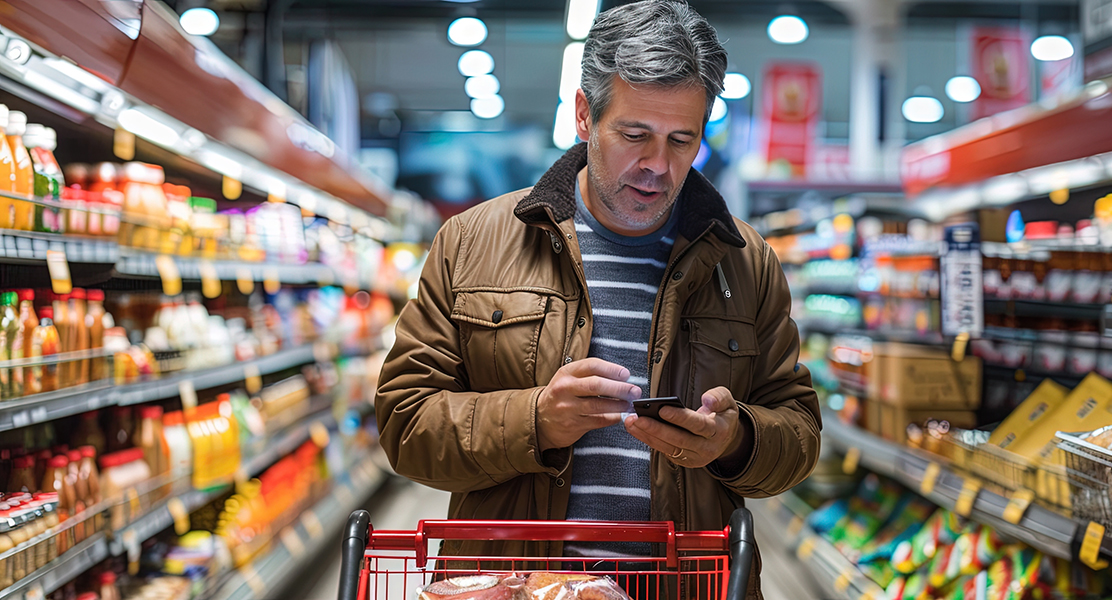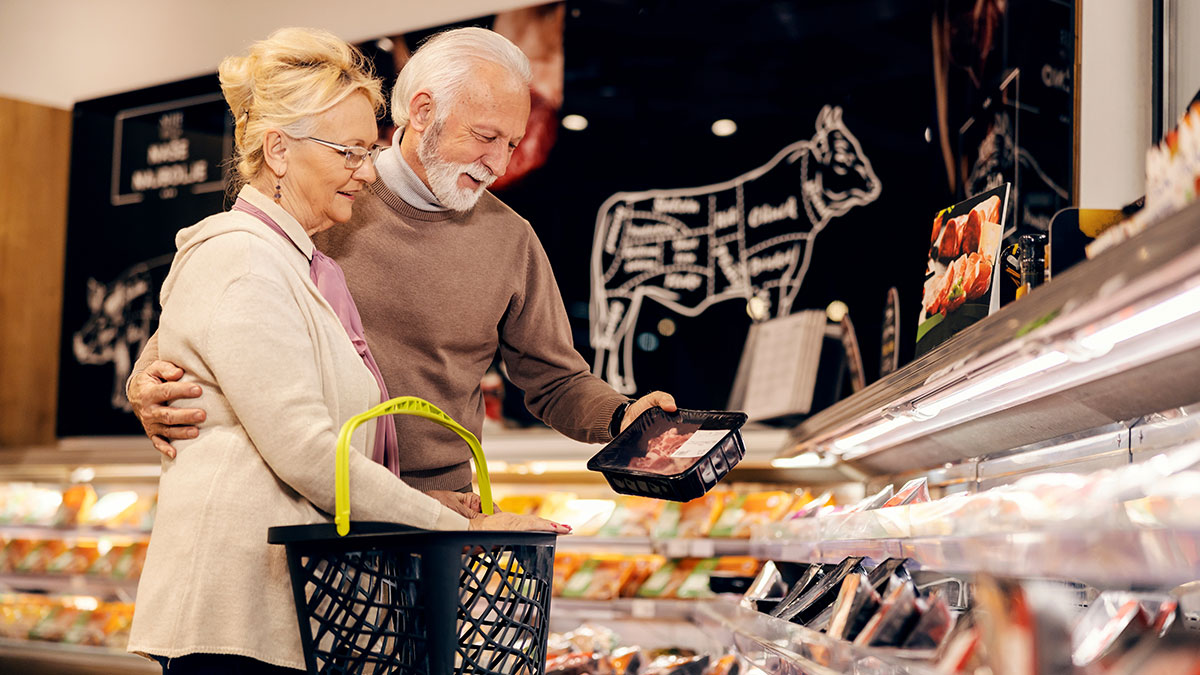By Mark Baum, Senior Vice President of Industry Relations & Chief Collaboration Officer, FMI

I’m aware of the perception that the older you are, the less likely you are to embrace technology. I personally don’t conform to that belief and would argue that it’s a dated notion that is no longer true, assuming it ever was.
Take, for example, the exciting trend in food retail of widescale digital technology adoption, with 92% of retailers using technology to personalize or customize the marketing or shopping experience, both online and in-store, according to The Food Retailing Industry Speaks 2024 report. While we know Gen Z and Millennials are known for being tech savvy (or at least “tech-dependent”), don’t think for a moment that older consumers are not embracing digitization in food retail — they most certainly are.
Almost two-thirds of shoppers use smartphones to look for deals (64%), including 57% of Boomers and 67% of Gen X shoppers, according to FMI data. Digital coupons are also popular among Boomers (52%) and Gen X (66%). Additionally, 68% of all shoppers say tech-enabled customer personalization is a good thing, with 52% of Boomers and 73% of Gen X agreeing.
While the percentage of online-only grocery shoppers has walked back from COVID-19 pandemic highs, the number of shoppers who shop online at least occasionally continues to grow, particularly among Gen X and Boomers.
The two most frequently used communications platforms — email and in-store signage — also remains among the most effective tools to connect with shoppers, meaning that even those who do not embrace technology are still being reached by grocers via traditional methods. While printed circulars are still used by almost 70% of retailers, social platforms have also emerged as a critical way for grocers to speak to shoppers, with Facebook (97%) and Instagram (88%) seeing near ubiquitous use among food retailers.
This embrace of technology is universal and transcends generations. Fundamentally, the food industry continues to pursue a wide range of approaches to reach broad customer bases, ranging from traditional to emerging strategies with a goal of meeting the needs of all consumers. It is imperative for product suppliers and food retailers to understand the changes in technology adoption and usage, along with shopper outlook, behavior, and preferences among all consumer segments, and to adapt assortments, promotions, and communications accordingly.


 Industry Topics address your specific area of expertise with resources, reports, events and more.
Industry Topics address your specific area of expertise with resources, reports, events and more.
 Our Research covers consumer behavior and retail operation benchmarks so you can make informed business decisions.
Our Research covers consumer behavior and retail operation benchmarks so you can make informed business decisions.
 Events and Education including online and in-person help you advance your food retail career.
Events and Education including online and in-person help you advance your food retail career.
 Food Safety training, resources and guidance that help you create a company food safety culture.
Food Safety training, resources and guidance that help you create a company food safety culture.
 Government Affairs work — federal and state — on the latest food industry policy, regulatory and legislative issues.
Government Affairs work — federal and state — on the latest food industry policy, regulatory and legislative issues.
 Get Involved. From industry awards to newsletters and committees, these resources help you take advantage of your membership.
Get Involved. From industry awards to newsletters and committees, these resources help you take advantage of your membership.
 Best practices, guidance documents, infographics, signage and more for the food industry on the COVID-19 pandemic.
Best practices, guidance documents, infographics, signage and more for the food industry on the COVID-19 pandemic.
